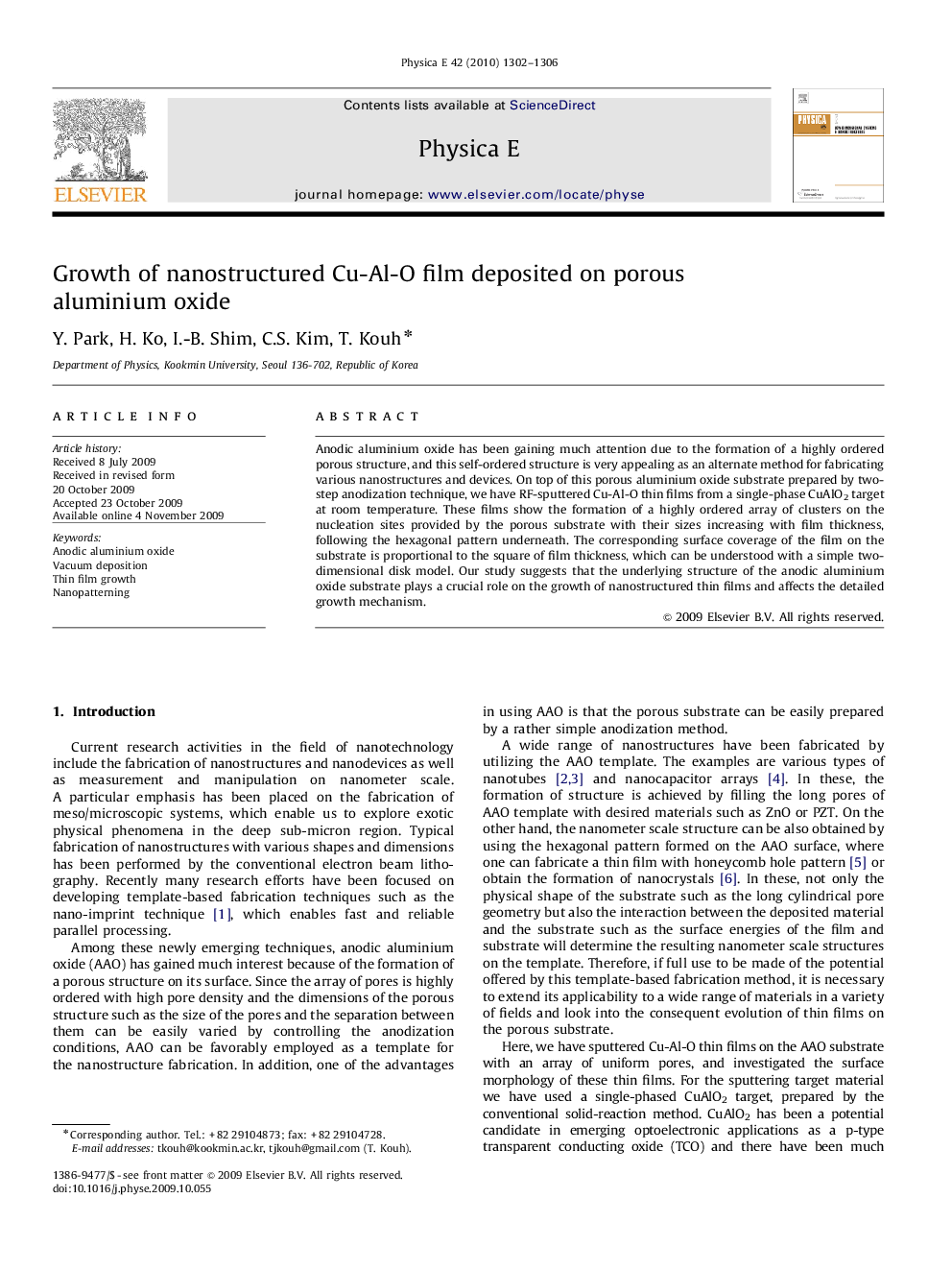| Article ID | Journal | Published Year | Pages | File Type |
|---|---|---|---|---|
| 1546151 | Physica E: Low-dimensional Systems and Nanostructures | 2010 | 5 Pages |
Anodic aluminium oxide has been gaining much attention due to the formation of a highly ordered porous structure, and this self-ordered structure is very appealing as an alternate method for fabricating various nanostructures and devices. On top of this porous aluminium oxide substrate prepared by two-step anodization technique, we have RF-sputtered Cu-Al-O thin films from a single-phase CuAlO2 target at room temperature. These films show the formation of a highly ordered array of clusters on the nucleation sites provided by the porous substrate with their sizes increasing with film thickness, following the hexagonal pattern underneath. The corresponding surface coverage of the film on the substrate is proportional to the square of film thickness, which can be understood with a simple two-dimensional disk model. Our study suggests that the underlying structure of the anodic aluminium oxide substrate plays a crucial role on the growth of nanostructured thin films and affects the detailed growth mechanism.
